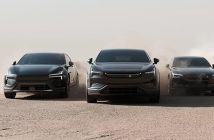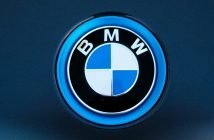+++ ASTON MARTIN may be known for building many of the stylish Bond cars we see on the big screen, but nobody really knew how it can get super aggressive when it comes to undermining the competition. Until now. Andy Palmer, Aston Martin CEO recently shared more details about its plans for a mid-engine supercar. Like he said, the 488 GTB is the best car in its segment and that they are hell-bent on competing against it. When asked how the company is going to take on the Ferrari 488 GTB, Palmer admittedly said that they need to recruit some of Ferrari’s key people particularly the head of engineering and the head of powertrains. In fact, he also admitted that there are 3 of them who are now already working for him. One of them is Max Szwaj. He’s Ferrari’s former head of innovation and body structures and is now the vice president and CTO at Aston Martin. There is also Jörg Ross who used to work at Ferrari as the head of advanced engines. Now, Ross is Aston Martin’s chief engineer and head of powertrains. The third recruit remains a mystery but we assume a formal announcement will be made later on. Palmer went on to say that if these 3 work with Aston Martin’s current hotshots like Marek Reichman (AM chief creative officer) and Nick Lines (AM chief planning officer), they would surely come with a great understanding of how the car will look like. It seems that Aston Martin is trying to pull a classic stunt here and trying to beat its rivals by hiring key players from the other side of the team. But to those familiar with what goes around the industry, well, this doesn’t sound new at all. Palmer confirms that there actually are some eight quarter scale models and some clays versions already made. As a matter of fact, there is one that he is especially interested about and is currently at the Milton Keynes studio located in Southern England. He has fairly good reasons for pushing it out of the Gaydon factory seeing how he considers it to be the 488’s “replacement”. Aston Martin’s upcoming mid-engine supercar is part of the company’s plans of launching new products every year for the next 7 years. Now known as the Ferrari 488’s future competition, it will sit alongside the Vanquish GT and the Valkyrie hypercar and would come out a year after the DBX crossover’s debut sometime in 2019. That is to say, we should see it come around by 2020. For now, hold on to your seats and wait for Aston Martin to perform another “Bond” move. +++
+++ I expected to see the BMW i8 Roadster at last month’s 2017 Frankfurt Motor Show, but it never made an appearance. So the question on fans’ lips now is when we will actually see the convertible. Rumours are circulating that it might make a debut in just a few weeks, but apparently, a few have already seen it in person. There was a private showing recently, strongly suggesting that the production i8 Roadster is almost here. And it was in an event in London where BMW allegedly unveiled the new Roadster to a few lucky clients only. I don’t know if these reports are valid, though there are some specific details that we should take note of. The same user said that the roadster will be having a set of light weight wheels that have a “square” design, and these are supposedly the lightest wheels one could get for the i8, with extremely narrow spokes. He then added that the production version is very much like the concept that was first seen in 2013, in terms of its design. The way the user describes it makes us believe that he really has seen the i8, and that he has gone inside it as well. He says that the cabin gets a fabric roof, and the rear seats were removed to provide a larger storage compartment. The new i8’s front seats have also improved a lot compared to the current ones, because they provide more support and comfort, that also includes memory capabilities. As for the instrument cluster, it also gets a minor update, now with a new generation iDrive and an updated gear indicator. What’s new is the i8 flood lamp located at the bottom part of the doors. Not only does the BMW i8 Roadster carry a more powerful electric motor, it also has the same gas engine as that of the coupe. Reports say that the new model might have an output of 372 horsepower, which is much more than the current model with only 357 horsepower from its 1.5 liter three-cylinder engine, together with the electric motor. As of today, I am still unsure when we will see the BMW i8 Roadster in person. As for the pricing, expect it to cost a little more than the current coupe. Right now, we will just have to wait for BMW to announce when it will be released, and they’ll likely share more details soon too. +++
+++ During many years, LAMBORGHINI has always relied on the use of large and powerful engines including the V10 and the V12. In fact, the company’s very first engine in the 350 GTV was a V12, which is probably also why they are not ready to give these up. Just last week, the automaker confirmed that they will be sticking with their original engines. Maurizio Reggiani, development boss of Lamborghini, further explained that the naturally aspirated V10 and V12 engines on models like the Huracan and Aventador will remain for quite some time, and they mean for as long as possible. So don’t expect to see these models to have newer and smaller engines anytime soon, or as long as Reggiani is the development boss. He then says that it provides “a sense of emotion in a super-sports car”. Reggiani once said that a Lamborghini’s DNA is made up of design, emotion and performance; elements that define a new car. The company then puts these elements in a scientific way by making them physical things so that the new cars can be compared to an old one, or perhaps, its competitors. Other factors that matter include sound, speed, acceleration and design. Lamborghini is one of the few automakers to hold out in using turbocharged engines or hybrid electric power. But soon enough, we will see the very first turbocharged plug-in hybrid from the brand when the Urus SUV is launched on December 4. Hopefully, in a few years, the Huracan and the Aventador will also have turbocharged and plug-in hybrids. Hopefully, technology will still capture the brand’s emotional approach. With regards to the upcoming Urus, Reggiani says that its weight, as well as the batteries’ packaging are less strategic than that of a super sports car’s packaging. He then added that they are beginning their transition to hybrid technology in super-sports car with the Urus, and eventually they’ll be ready to move on. That being said, we can expect Lamborghini sports cars and sedans being developed using alternative energy. But probably not in the near future. Furthermore, they said that the company isn’t very keen on offering autonomous vehicles. In fact, Reggiani said in another interview that they will likely be the “last brand” to offer it. So for Lamborghini buyers, the closest model you could get to a fully autonomous Lamborghini would be none other than the Urus. This SUV actually is expected to feature a number of on-road safety features such as adaptive cruise control, a rear view camera, and a lane-keep assist. All these features are new for the Italian automaker. +++
+++ Despite being less powerful than its predecessor, the latest OPEL Insignia GSi proved it can run quicker by twelve seconds at the Green Hell. While not everyone was expecting this from the new sedan’s 260 hp and 400 Nm of torque, the new GSi proved itself to be much lighter and a more performance-focused version of the former OPC variant. The new Opel Insignia GSi offers an updated version of the 2.0-liter turbocharged engine which is paired to an 8-speed automatic transmission and runs with an all-wheel drive system. To test its performance, Opel brought the sports sedan to Nurburgring with the help of Volker Strycek, a former DTM racecar driver and Director at Performance Cars and Motor Sport. The result was beyond exceptional after the new GSi was able to outperform the old OPC variant on the tracks. It is rather unfortunate that Opel had not provided an official lap time but being 12 seconds faster is nonetheless pretty impressive and very promising. Strycek reveals that it could be owed to the new GSi’s lightweight structure and excellent chassis configuration along with its improved hydraulic suspension and enhanced software. The results can speak for themselves, he said, adding that he’s able to drive away with the new Insignia GSi up to 12 seconds faster; though evidently, he’s pushing the car throughout the entire process. Other than the 260hp turbocharged powertrains, the new version is packed with a handful of performance features such as the intelligent all-wheel drive with torque vectoring, and a set of 20-inch wheels with Michelin Pilot Sport 4 S tires, including high performance Brembo brakes. While it weighs less than the outgoing OPC model with more or less 160 kilograms to its advantage, the Insignia GSi has also put down lower horsepower. But despite the lack of horses, the midsize sedan only takes 7.9 seconds to run from zero to 100 km/h before hitting the top speed of 231 km/h. Outside, the Opel Insignia GSi has received some new sportier features such as new bumpers, wider grille, chrome air vents, rear spoiler and dual exhaust pipes with chrome tip. The performance look doesn’t end there since the interior is equipped with several performance-oriented features as well. Inside, the GSi emblem is present throughout the seats and boot lid while the rest of the interior shows aluminum sport pedals, leather sports steering wheel and integrated sports seats with leather upholstery and black ceiling for sportier look. Opel offers the Insignia GSi with two engine options such as the 2.0-liter twin turbocharged diesel and the 2.0-liter turbocharged gasoline. No official pricing has been provided yet but the new Opel Insignia will be open for orders sometime this October. +++
+++ Volvo’s electric performance brand has today announced plans to build a competitor to the upcoming Tesla Model 3 with its POLESTAR 2, and to also take on the electric SUV market with the Polestar 3. Having unveiled its 2+2 high powered hybrid coupe in the form of the Polestar 1, the sub-brand of the Chinese-owned Swedish company said it will produce full-electric competitors to the Model 3 and X at its newly-built Chinese production facility in Chengdu from 2019. Although details of the 2 vehicles will be kept secret until their unveiling in the next 18 months, the Swedish brand named the Tesla Model 3 in its presentation in Shanghai today as the primary competitor to the Polestar 2. It also hinted that it will match the American brand’s range capacity of 400km+ with its own vehicles. While it appears Tesla is currently building parts of the Model 3 by hand, with reported production delays likely to push back the American company’s mass-scale production schedule by some time, Polestar said it takes no pleasure in issues suffered by other manufacturers. Polestar’s chief operating officer, Jonathan Goodman, said Tesla will likely sort its production issues out in time to be competitive, but that Polestar’s biggest advantage in this bold new era of electric mobility is its rich and deep history in producing cars for over 90 years as part of the Volvo group. “I am not going to comment about any trials and tribulations of our competitors, I am sure they will be fine”, Goodman told about Tesla’s Model 3 production issues. “But one of the genuine advantages of being a subsidiary of Volvo cars is that you have got 90 years of manufacturing experience and all the technology… people know how to build them, they know what needs to be done and they do what it takes to get cars from great design into production and do it successfully”. According to Goodman, this deep experience is what will help the brand execute its vision to build its new factory in China (for which production is yet to start) and produce 3 new electric-powered vehicles by 2021, starting with the low-volume hybrid Polestar 1 in 2019 and the much higher volume Polestar 2 in 2020 and Polestar 3 in 2021. “I think that’s one of the advantages we have over some of the startup brands is that we know the job that needs to be done to get it built, that’s why we can bring the cars to market quicker than may be some others can”. Goodman said he was “supremely confident” that Polestar would meet its current targets and have its 3 new vehicles on sale by 2021. +++
+++ The VOLKSWAGEN Group is looking to diffuse emerging tensions among its mass-market marques by giving them more clearly-defined roles in the future. According to a report from Reuters, the automotive giant wants to cut the overlap between Skoda, Seat and Volkswagen vehicles, in an attempt to better take advantage of its manufacturing scale. “The key challenge is to achieve a perfect market coverage with clear territories for the brands”, Volkswagen Group CEO, Matthias Müller, told a meeting of managers in Wolfsburg. “We must now be able to better use the synergies that our unique alliance of brands offer than we have done to date”. The reshuffle will aim to better address 14 main customer groups in the European market. It comes hot on the heels of news that, spurred by positive press and strong profitability, Volkswagen is looking to put the brakes on Skoda. The Czech brand enjoys access to the key technology from the alliance, but has the advantage of cheaper Czech labour to build its cars at the moment. If a report from Reuters is to be believed, VW could move some Skoda manufacturing to Germany and start charging more for access to technology, in an attempt to slow its strong growth and reinforce Volkswagen’s status as top-dog in the group. +++
+++ With its unveiling of the Polestar 1, its change in manufacturing locations to China and the announcement of upcoming Polestar 2 and 3 models, VOLVO ’s soon to be electric sub-brand also revealed details of a subscription model the company says is the future of automobile ownership. The Polestar subscription service will see users pay no upfront deposit and have their entire ownership costs covered in flat monthly payments, including insurance, maintenance and an array of other services. Speaking to the media at the unveiling of Polestar’s future plans in Shanghai, the company’s chief operating officer, Jonathan Goodman, said the subscription model is the perfect way to alleviate any potential buyer concerns around depreciation of electric cars, which are yet to be proven on the market. Goodman said: “I think that people are a little uncertain with an electric car, as to ‘do I want to buy it and then be uncertain, what I am going to sell it for in 3 or 4 years?’. If I am buying it for 10 years, I don’t worry about it, but I think subscription is a way of doing that, it takes away any angst around people that really like the acceleration and performance of the electric car, but not the uncertainty of resale”. The subscription terms will be either 2 or 3 years, with vehicles then coming back into the Polestar fleet, being refurbished and going back out again on secondary subscription services. As part of the service, Polestar will also offer pick-up and delivery servicing that sees the brand bring an alternative car to owners and take away their Polestar vehicle for regular maintenance. Goodwin says the brand is also conscious of realistic buyer needs, which is why it has included a set number of days where other Polestar or Volvo vehicles can be had at no extra cost. For example, a Polestar 1 owner may need more than the vehicle’s 2+2 seat configuration for a weekend away, so they could use the brand’s smartphone app to request a larger XC90 for the task at hand. Other options are also available, such as using the app to call for a Polestar technician to come and fit a roof box for extra storage for items such as skiing equipment. The app also allows for what is effectively a digital key, allowing owners to pass the vehicle’s key to Polestar technicians and other third-party agents when required without being nowhere near the vehicle itself. The subscription model will underpin the three upcoming Polestar models, however, Goodman said that those that still wish to buy the vehicle outright can choose to do so. Volvo’s performance arm Polestar has moved its production future to China, where it will build a state-of-the-art facility that will also act as a performance and customer centre. Polestar’s all-electric future has been boosted with today’s announcement of the Polestar 1, one of three models set to be manufactured at the plant in Chengdu. The move to China should come as no surprise, as the brand’s parent company Volvo is owned by Chinese manufacturer Geely. Speaking to press at the 1’s unveiling, the company’s chief operating officer, Jonathan Goodman, said the manufacturing plant will be unlike any currently in existence. “We want to do things a little differently. We wanted to build a plant that is also a reflection of our brand, a plant that is modern, progressive, dynamic, technologically advanced and environmentally responsible”. Part of that environmentally-friendly focus sees Polestar use 100 per cent renewable hydroelectric energy. The facility was designed by a Norwegian architectural firm. Although Polestar says the first of its new hybrid coupes will roll of the facility’s production line next year, construction of the actual plant itself hasn’t yet started, with the company aiming to have both the plant running and the first car out the door before the end of next year. According to Goodman, the plant is designed in such a way that it can handle the 500-1.000 a year “low volume production of Polestar 1 and high volume productions of the future models”. Those future models include the Tesla Model 3 competitor, the all-electric Polestar 2 from late 2019 and the soon-to-follow electric SUV, the Polestar 3. Unlike the Polestar 1, the other 2 models will be made from the get-go in right-hand drive. As for why the vehicles aren’t being built in Volvo’s home country of Sweden, Goodman said it made logical sense to base the plant in China, given not only the parent company connection but also the lack of capacity back home. “I don’t think we have the capacity to do that in Torslanda (Sweden) at the moment. You have some very specific manufacturing technologies to build this car with a carbon-fibre body. Plus, China is going to be one of the biggest markets for electric cars going forward. You can do things very quickly here”. Once it produces the Polestar 1, the new Chinese facility will be producing the most powerful production car ever built in China. Production of the Polestar 2 and 3 will start from 2019, and volume for those is expected to be in the tens of thousands per year. Current vehicles ‘engineered’ by Polestar but based on Volvo models will continue to be produced in their current factories. +++
+++ To go along with its phenomenal comeback, WIESMANN Sports Cars GmbH has inked a deal with BMW to supply its engines. The announcement came from a brief press release regarding the agreement on the new product development and supply between the 2 companies. After all, Wiesmann sports cars have been using BMW M division’s motors all the way back since 1993. The company was originally established by brothers Friedhelm and Martin Wiesmann in the 1980s. However, it was only after Wiesmann introduced the MF30 in 1993 that it became famous. The final edition from the original Wiesmann was the GT MF4-CS which was built to commemorate the sports car company’s 25th year anniversary. The MF4-CS has held its premiere at the 2013 Geneva Motor Show bearing the BMW-sourced 4.0-liter V8 engine that packs 414 hp and 400Nm of powerful torque. The German marque only made 25 examples of the GT MF4-CS that sells for 193,193.28 EUR apiece which has 1,350kg of curb weight and is featuring carbon fiber roof, sports brakes and a fully adjustable chassis. Other highlights include anti roll-bar, daytime running lights, carbon rear wing, massive front splitter and wide wheel arches. It was then offered with an optional track upgrade consisting of Michelin Cup tyres, a four-point harness and sport brake pads along with a carbon package for those who want to upgrade their cabin. Fast forward to recent times, Wiessman closed down in 2014 and was bought in 2015 by British couple Berry and Anita Tatalovic to get Wiesmann back on the road. In a statement, Mario Spitzner, CEO at Wiesmann Sports Cars described how the signing of this agreement with their preferred partner (BMW) marks an important milestone for the company. Adding that after the pre-development phase, they are happy to be working once again with their reliable partner and that their cooperation with BMW will help them position Weismann back at the front line. Since its return, Wiesmann hasn’t shared information regarding its first new model. Despite the scarce details surrounding the engine specs, it would probably have the latest BMW M5’s 4.4-liter V8 that packs 600 hp. If this is so, Wiesmann will not only use BMW M engines but will also combine it with the ZF’s 8-speed automatic transmission. Like we said earlier, it is very likely that BMW will provide the company with its V8 S63 engine that comes with the latest F90 BMW M5. Normally, the latest BMW M5 can go from zero to 100 km/h in 3.4 seconds. It is considerably faster than the M4 GTS and this makes it probably the fastest accelerating BMW at the moment. In other words, this can really get exciting once Wiesmann Sports Cars finally develops its new model. +++



